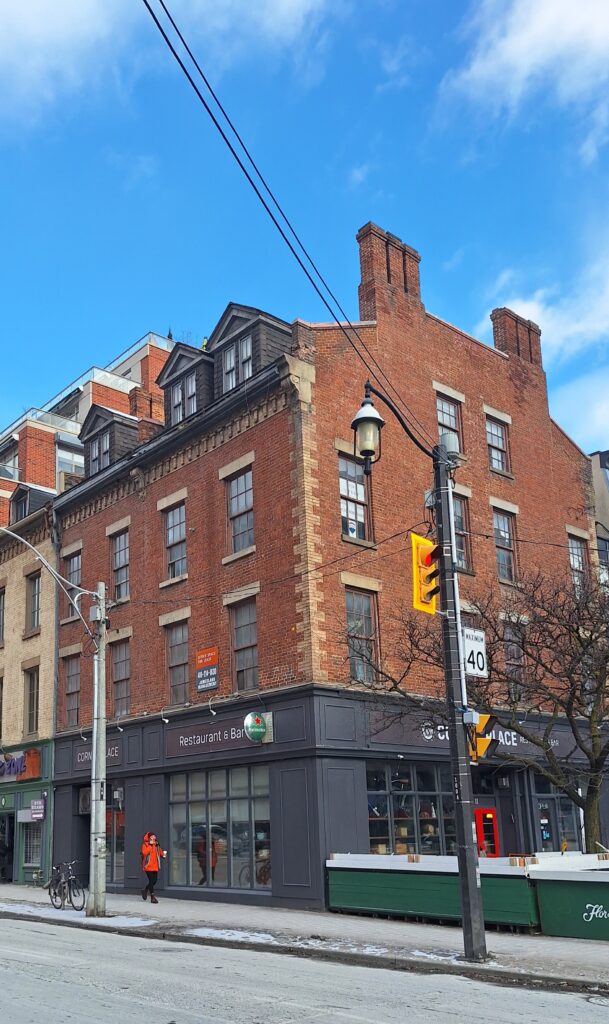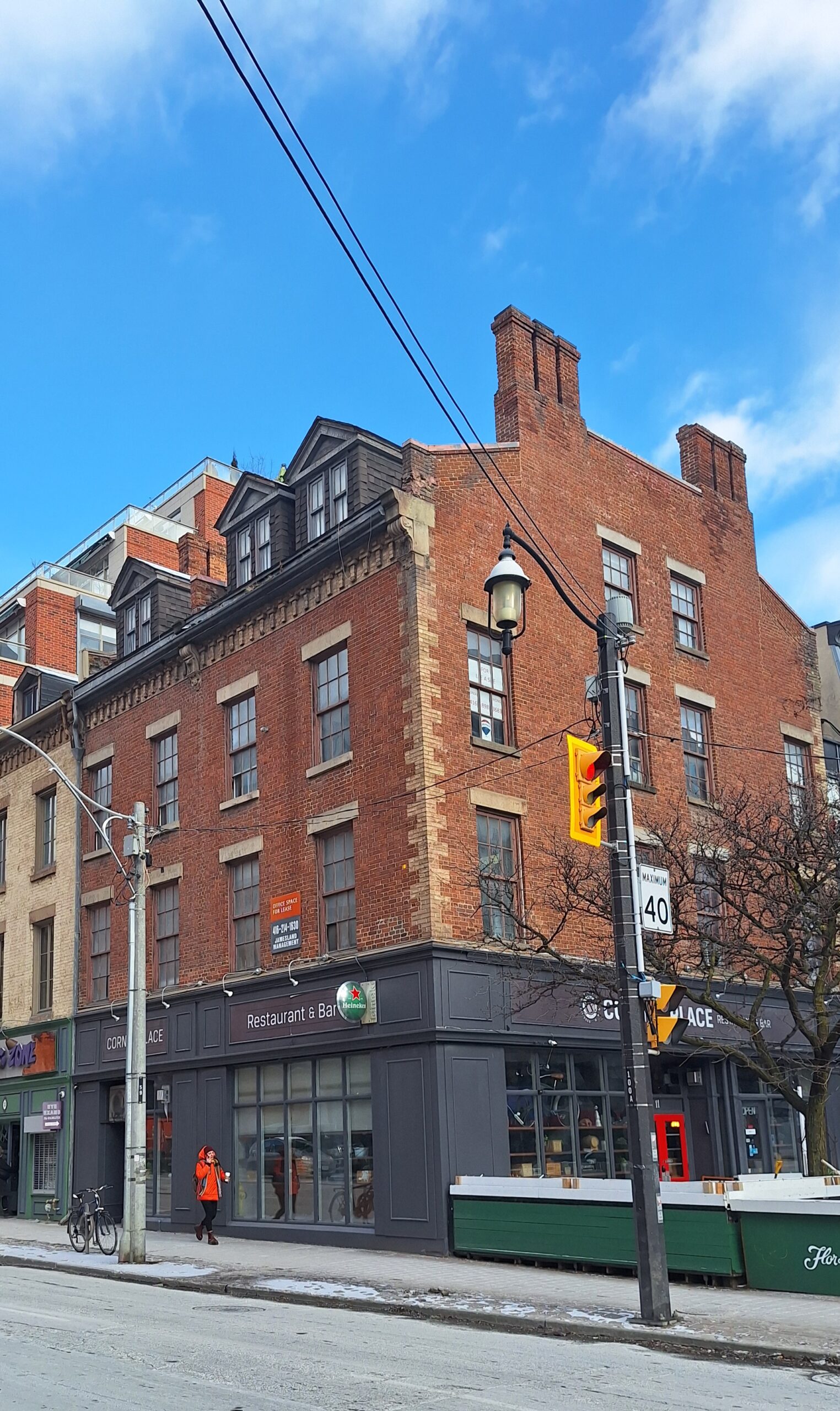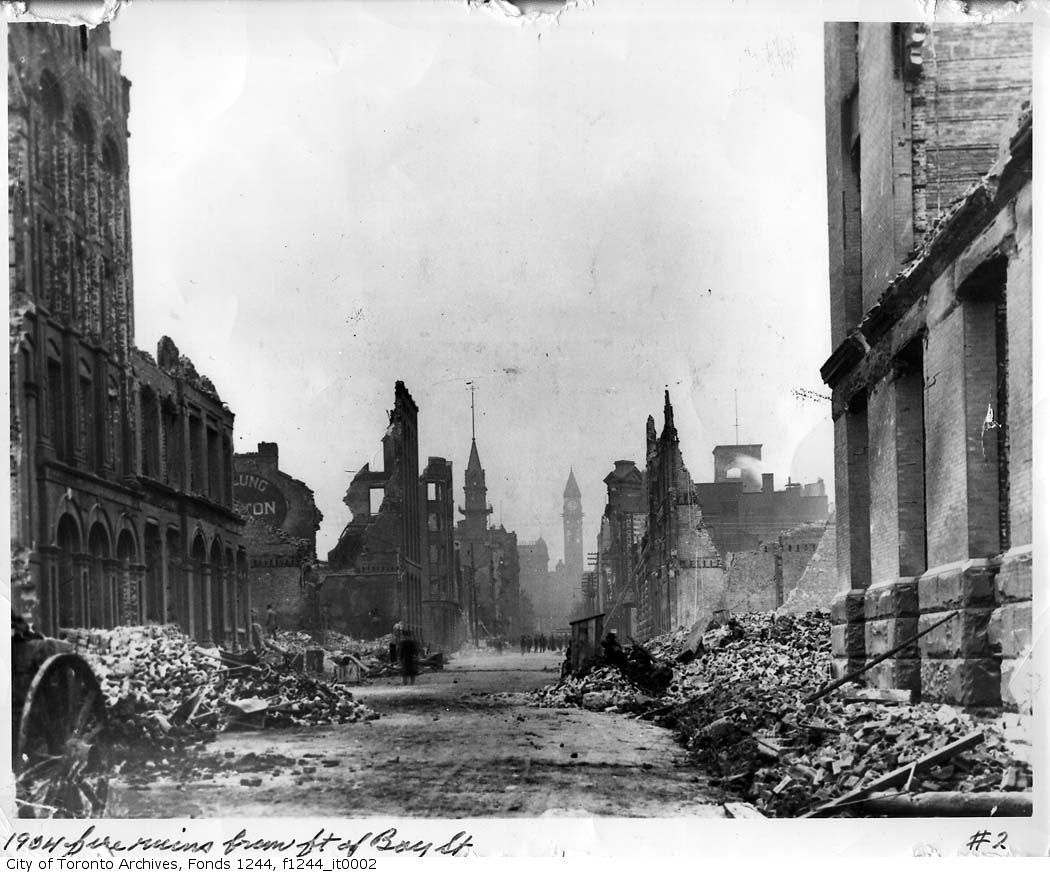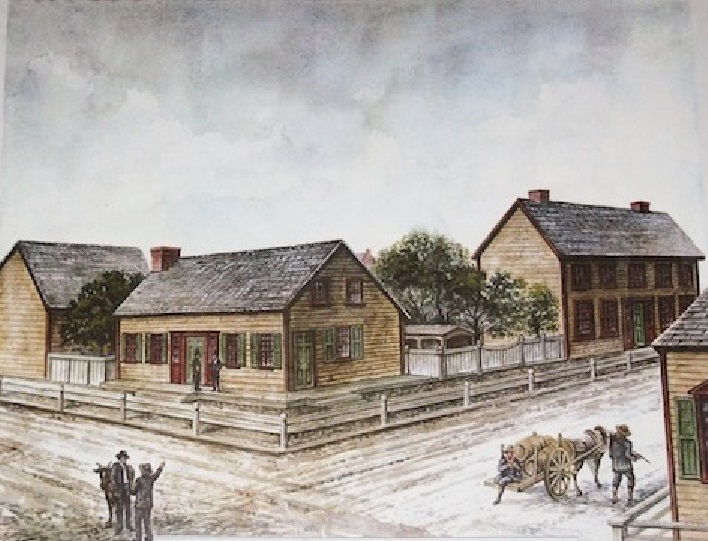Bruce Bell, History Columnist –
Jarvis Street, named for one of Toronto’s earliest residents, in the late 19th century was this city’s most desirable address, with opulent mansions lining its well-manicured sidewalks.
The street came to life in the early 1800s as a dusty trail leading to the Hazelburn estate of Samuel Peters Jarvis. His estate was built in 1822 where Jarvis and Shuter Streets now intersect.
Between 1846 and 1851 Hazelburn’s once sprawling grounds were subdivided into smaller lots, with new streets running through its once wooded area. During this time Jarvis Street was named for William Jarvis, father of Samuel Peters.
One of the few early buildings to survive is the former Graymar House, still with its original 16 chimney pots rising from its roof at 29 Jarvis, at the northeast corner of Front and Jarvis Streets. Built as a hotel circa 1840, it had a tavern on its main floor.
The hotel catered mostly to farmers coming into the city on Friday nights to be close to St. Lawrence Market when it opened at 5 a.m. on Saturdays. At the Haymarket Building next door, horses were weighed and sold to wholesalers on the street.
Henry Bower Lane, who designed the original city hall (now encased within the market), is believed to have also designed Graymar House and the Haymarket (still standing at 106 Front Street East, now Popeye’s Chicken).

The former Graymar Hotel, one of the oldest buildings on Jarvis Street. Photo: Bruce Bell
Toward the end of the 19th century, Jarvis Street became a tree-lined boulevard 80 feet (24 metres) wide that quickly became the most enviable address in Toronto.
One of the first great homes to rise there was Northfield, built in 1856 for longtime Ontario Premier Oliver Mowat, a Father of Confederation. Today this great home still stands at 372 Jarvis Street, just north of Carlton Street, as part of the National Ballet of Canada School.
After living in Northfield only six years, Mowat sold the mansion to Edward Rutherford, president of Consumers’ Gas. The Rutherfords occupied Northfield for 52 years during Jarvis Street’s heyday, when it was nicknamed Canada’s Fifth Avenue after New York City’s fashionable street. Its peak in Toronto came with the arrival of the wealthy and influential Massey clan.
Having made a fortune in farm equipment, Hart Massey in 1882 bought the former McMaster mansion, then called Euclid Hall, at 515 Jarvis Street. It was first built in 1868 for wholesale magnate A.R. McMaster.
After extensive remodeling, the Masseys’ magnificent Baronial Gothic manor, complete with a Moorish-styled men’s smoking room, became Toronto’s social and political centre in the late 19th century. Today this grand house on the northeast corner of Jarvis and Wellesley, with most of the original architectural features, is home to the popular Keg Restaurant.
Next door at 519 Jarvis is another Massey mansion, the boyhood home of Governor General Vincent Massey and future Hollywood actor Raymond Massey. Today this completely refurnished mansion is home to York College of Industry and Technology.
Another wealthy family residing on Jarvis Street home was the Gooderhams. The 1889 George Horace Gooderham house, 504 Jarvis Street at Cawthra Square, was designed by architect David Roberts, also responsible for most of the landmark Gooderham and Worts Distillery east of Parliament Street.
This lavish red-stoned Romanesque mansion, built for the 21-year-old grandson of Distillery founder William Gooderham, still stands and has been completely refurbished.
.The great homes of Jarvis Street didn’t have to be spectacular huge mansions, as proven by the former residence of Charles R. Rundle, 514 Jarvis Street at Gloucester Street.
This extraordinary example of Romanesque/Queen Anne/Music Hall architecture was designed by one of Toronto’s greatest architects, Edward James Lennox in 1889. Lennox designed leading Toronto landmark structures including the still standing King Edward Hotel on King Street, Casa Loma, Old City Hall and additions to the Massey mansion.
Despite its pedigree, Jarvis Street declined during the 20th century, overtaken as fashionable by Rosedale and Forest Hill. The great homes of Jarvis started to be divided into apartments, rooming houses or just plain abandoned.
When I arrived in Toronto in the summer of 1972, Jarvis Street was synonymous with drugs, street prostitution and flophouses. However, many of these former estates have been given new life. With new condos, restaurants and hotels, Jarvis Street is returning to its glory years




